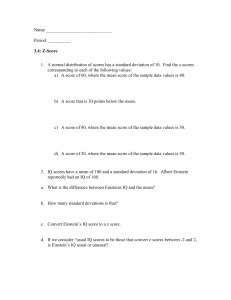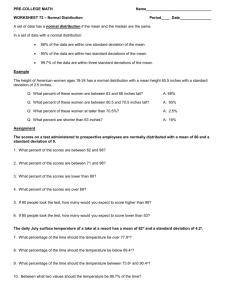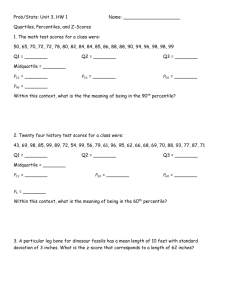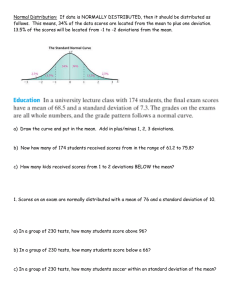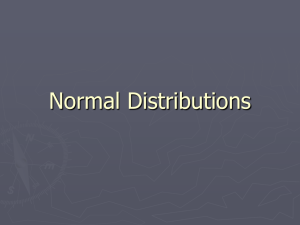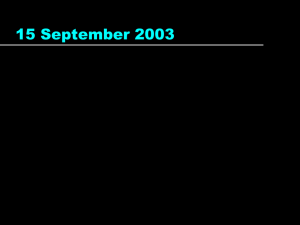CHS Statistics End of Chapter 2 Notes 68-95
advertisement
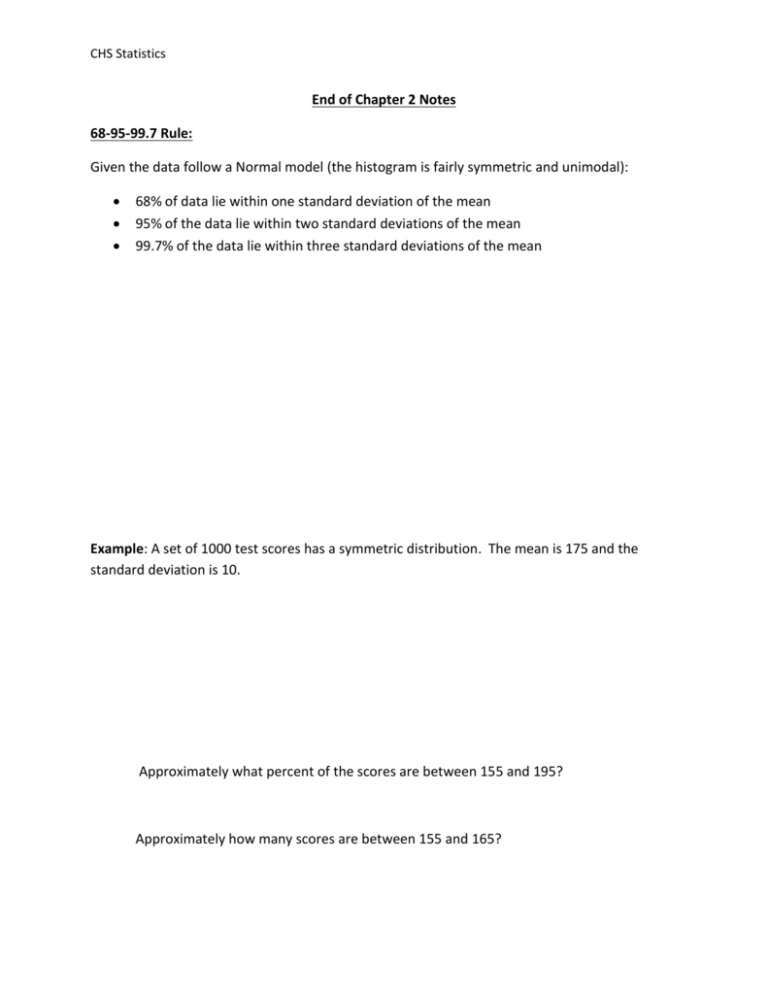
CHS Statistics End of Chapter 2 Notes 68-95-99.7 Rule: Given the data follow a Normal model (the histogram is fairly symmetric and unimodal): 68% of data lie within one standard deviation of the mean 95% of the data lie within two standard deviations of the mean 99.7% of the data lie within three standard deviations of the mean Example: A set of 1000 test scores has a symmetric distribution. The mean is 175 and the standard deviation is 10. Approximately what percent of the scores are between 155 and 195? Approximately how many scores are between 155 and 165? Example: IQ scores have a follow a Normal model with a mean of 100 and a standard deviation of 15. Between what range does 99.7% of the scores fall? Measure of Spread Summary: Range IQR Variance Standard Deviation Measure of Position: z-score – the number of standard deviations a value is from the mean o A way of standardizing multiple units of measure for comparison (inches of a long jump and miles biked in a race) Sample: Population: Example: Suppose you score 1125 on the SAT test with a mean of 1000 and a standard deviation of 190. You also take the ACT and receive a score of 23. The mean is 19 and the standard deviation of 4. Which score is better? Example: Heights of women have a mean of 63.6 in and a standard deviation of 2.5 in. Erin Zito has a height described by z=-1.25. What is her height in inches? Example: The mean price of new homes for a sample of houses is $145,000 with a standard deviation of $20,000. The data set has a Normal distribution. What are the z scores for: a) $250,000? b) $55,000? c) Which z-score is the farthest from the mean? Interpreting z-scores



